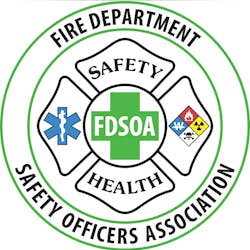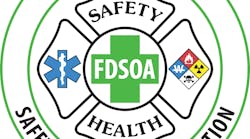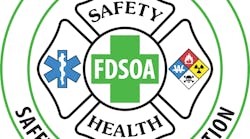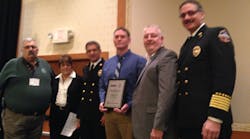SCOTTSDALE, Ariz. – While the apparatus standards adopted by the National Fire Protection Association for 2015 are not as onerous as ones in previous years, they are still important and are aimed at keeping firefighters safe.
That’s what Doug Kelley, wildland/rescue product manager for KME Fire Apparatus said to a group of firefighters and officers at the Fire Department Safety Officers Association’s (FDSOA) apparatus symposium.
The 2015 standards took effect on Jan. 1, but there are “significantly less than previous years,” Kelley said.
In an hour-presentation, Kelley broad brushed several of the changes made during the most recent five-year cycle. One of the most controversial was a standard governing firefighters riding outside of apparatus cabs. Recognizing there are portions of the country that fight wildland fires with firefighters riding on running boards or other places on the apparatus, using handlines to chase fires, NFPA decided to provide some guidance on keeping people safe, Kelley said.
From now on, to be compliant with NFPA standards, firefighters can only be seated behind the cab in an area protected with a roll-bar type structure with mesh screen, Kelley said. That provision is found only in the 1906 standard for wildland apparatus, Kelley said. He added that it’s still not compliant to have firefighters riding outside of the cab in apparatus covered by the 1901 standard.
A brand new standard is dedicated to Ultra High Pressure Pumps which have been gaining popularity in the fire service, Kelley said. Previously, there were no standards recommended for their use.
Many of the standards are pointed directly at manufacturers and involve testing and design factors and do not directly involve firefighters, he said, using pump plumbing pressure testing as an example.
Perhaps one of the most visible changes will be the addition of safety signs from the Fire Apparatus Manufacturers Association (FAMA). The signs, which are uniform stickers or placards, give notice to firefighters how certain features and equipment are to be used correctly and warn of the consequences of improper use. Kelley said the idea is to have all the signs be common and universal for all apparatus for consistency.
Tiller cab integrity was another new standard developed by NFPA and included in the news standards, Kelley said, noting that they’re not really crash test standards, but more like static load testing. That’s the same kind of testing apparatus cabs undergo.
Walking surface areas on top of apparatus, not protected by handrails, must now be delineated by yellow or orange reflective tape or markings, Kelley said, noting that manufacturers are having challenges with the requirement – keeping the tape adhered to diamond or tread plate which its commonly found on walking surfaces.
Under the new standards, there now must be an interlock between the pump gear and throttles, Kelley said, explaining the standard now says only the throttle at the pump panel can be active and all others, including the foot pedal in the apparatus cab, must now be disabled while pumping.
Another interlock is required while the pump is in gear and pumping to prevent it from being shifted into road gear, Kelley said, noting that under the old standard it was “theoretically possible” to move the pump control.
“Once all the crashing and clanging is done, it could take off,” Kelley said of the slim possibility of an apparatus driving off if someone shifted the control from pump to road gear.
One of the better new standards, according to Kelley, is the need for a pump discharge gauge in apparatus cabs for all those with pump and roll capabilities.
Although they are rare in the fire service, the new NFPA standards will also now encompass wildland firefighter personnel carriers. Kelley said they now must meet certain roll over protection standards and weight limits.
There were many other minor standards changes that Kelley said should be “transparent” and obvious to firefighters and manufacturers as ways to keep firefighters safe.
Although the 2015 standards are brand new, Kelley said the 2020 editions are not that far away. The NFPA will accept comments and proposals for new standards and modifications to one already recommended to June 2018 when the committee process will resume again for another round. The standards are decided by a vote of NFPA standards committee members and are only recommendations.
More from FDSOA:
- FDSOA's Apparatus Symposium Opens in Ariz.
- FDSOA Symposium: Diesel Emissions Standards Need not be so Scary
- FDSOA Symposium: NFPA 2015 Apparatus Standards Reviewed
- FDSOA Symposium: Politics Play a Role in Apparatus Purchasing
- FDSOA Symposium: Experts Field Apparatus Questions
- FDSOA Symposium: Detroit FD Weathers City's Bankruptcy
- FDSOA Symposium: Apparatus Design Is Important for ISO Ratings
- FDSOA Symposium: Drones Can Be Valuable Tools For Responders
- FDSOA Symposium: NFPA Focused on Alternative Fuel Emergency Safety
- FDSOA Symposium: Graham Lectures on True Risk Managment
- FDSOA Symposium: Pros and Cons of Thermal Imagers Discussed
- FDSOA Symposium: Maintenance is Key to Keeping Apparatus on the Road









